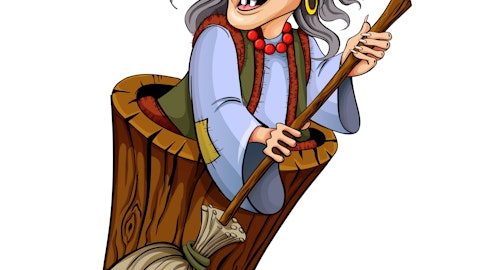Some of the most famous and recognizable tunes and compositions like Beethoven’s For Elise for example, beautiful as they are, do not require a virtuoso on any of the 7 hardest instruments to play. But let’s find out what these seven are, and what it takes to master them.
First of all, there are many kinds of musical instruments, and many classifications are made to divide them by some criteria. The instruments are usually most widely being classified into string instruments, winded instruments, percussion instruments, and in modern times the electronic instruments. Most of them require excellent finger work, like all string instruments. Winded instruments add another layer of cooperation between finger work and breathing technique, while percussionists ought to have an exceptional sense of rhythm. The approach to this problem might also be tricky, a pianist, for example, uses both hands to play and read two different music lines, while a violinist uses both hands for playing only one melody. On the other side, winded and fretless string instruments require a very good hearing in order to get the specific height and color of the tone. The age at which someone starts playing an instrument influences a lot how well that person will develop good hearing and finger motoric, and how successful is going to be in mastering the instrument.
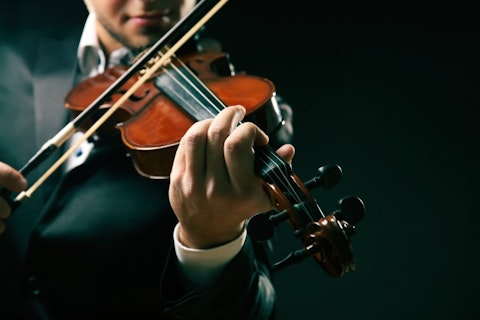
Africa Studio/Shutterstock.com
“The piano is the easiest instrument to play in the beginning, and the hardest to master in the end”, said Vladimir Horowitz, a Russian-American pianist and composer. But was this just a subjective thought and maybe this can stand for any other instrument? Choosing the hardest instruments to play then must take into account many criteria, from physical skills, age, to subjective expectations and difficulties that one finds while mastering an instrument.
Since the initial criteria could not be precisely established because it heavily relies on subjective opinion, we used people’s personal opinions from various musical forums such as the Violinist and TalkClassical, to name a few. On the other side we used physical criteria in terms of motoric and breathing skills and coordination of hand and foot work.
In any case, an interesting research has shown that playing an instrument improves cognitive abilities and many brain functions. So whether you wanted to give your brain a dose of daily exercises, or just wanted to learn some catchy tunes to heat up the atmosphere at parties and around camp fires, you might be interested in finding one among 7 Easiest Instruments to Play While Singing. For more advanced levels, we have made a list of hardest instruments to play, so let’s find out which ones we’ve chosen!
7. Bagpipes
Bagpipes are a winded instrument widespread throughout the Europe, Western Asia, and parts of Northern Africa, and therefore appear in many forms producing a variety of different sound colors and having a diverse range. Because of that, they differ in shape also. Nevertheless, main parts of a bagpipe are “bag”, which is an air reservoir, a chant, and a drone. Even though it is not a complex instrument musically, it requires great physical coordination of movements. The tricky part of playing bagpipes is dividing several actions that keep the instrument playing, which are constant air flow, controlling of drone tuning, and actually playing the melody on the chant.
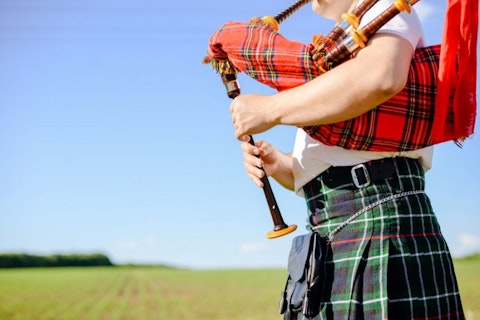
Copyright: gorosi / 123RF Stock Photo
6. Tabla
Up next in our list of hardest instruments to play is Tabla, that is a percussion instrument spread throughout India, Pakistan and Bangladesh, invented in the 13th century, and has been considered an elemental instrument for Hindustani music since 18th century. Tabla consists of only two drums of different sizes, “bayan”-the base drum, and “dayan”, the smaller drum. This instrument is played both with fingers and palms, which requires excellent coordination. The tricky part of playing tabla is striking the right place on the drums, for it is very sensitive in terms that each spot gives a different sound. It takes years of dedication and practice to master the technique, use your fingers and palms correctly, whether through pressure or sharp striking. Every movement creates a unique sound, which makes this instrument special among other percussion instruments.

5. Pipe organ
Pipe organ is, first of all, one of the most complexly built musical instrument, consisting of many parts, which result in grandiose sound it produces. Main parts of a pipe organ are keyboard(s) and other manual controls, pipes connected to each key on the keyboard, a mechanism that connects them and pumps air into the pipes, and then a device that supplies the air under pressure. There are usually several sets of pipes, which are being controlled by pedals by player’s feet.
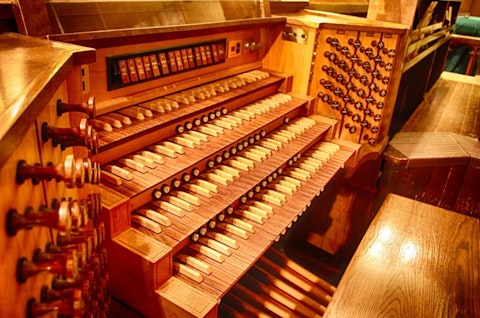
4. Pedal harp
Harp is one of the oldest depicted instruments that we know of, some of the earliest representations of harp come from wall paintings of ancient Egyptian tombs some 3000 years BC. Since then, the shape, appearance and tone range of harp changed and developed through time. The importance of harp in people’s traditions is perhaps most illustratively shown on the coat of arms of Ireland, where it stands since the 13th century. Pedal or concert harp that ranks 4th in out list of hardest instruments to play is a stringed instrument that consists of 47 strings, it has range of six and a half octaves, and seven pedals. The mastery of playing harp requires perfect coordination and timing of movements. The player must be prepared on the note before plucking the string, and also harmonize it with pedal pressing, while each pedal has 3 positions.
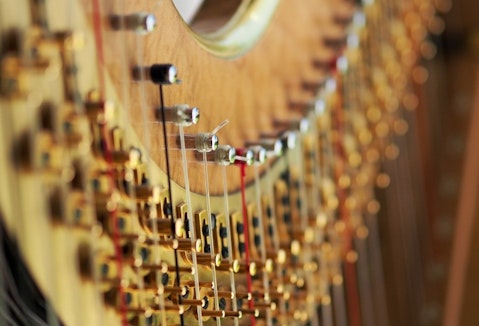
3. Violin
Although many fretless string instruments are very hard to master, we have chosen violin as a representative. The violin as we know it today evolved in Renaissance Italy, and remained one of the most played instruments throughout the world. The first thing that makes it one of the hardest instruments to play is the unnatural position that it is held up, resting on the shoulder and making tension in left arm, shoulders and neck. Secondly, it is separating left and right hands, while they do different things. Third and the most important is the very technique of playing the violin, which reflects in the way musician produces tone colors, vibratos, dynamics, etc. which is unique for every player and perhaps that is the most challenging part of playing this instrument.
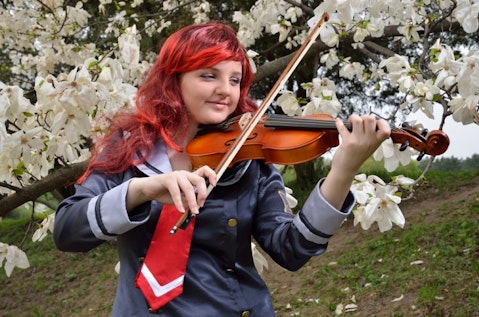
Oleg_Mit/Shutterstock.com
2. Oboe
The oboe ranks second in our list of hardest instruments to play. As we know it today, it originated in the 17th century in France. Its range gets up to around 3 octaves, and it is mostly soprano and mid-soprano tones. It is usually made of wood, and has a double reed which is sometimes custom made for the musician. Getting from lower to higher tones requires opening and closing the reed which is the hardest part of the oboe playing technique.
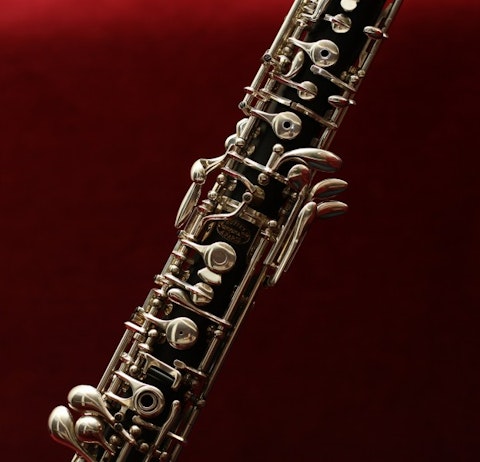
1. French horn
The origins of this horn come from the ancient times, when instruments like this were made out of animal horns. French horn originated in the 17th century in France from French hunting horns. The range of French horn is vast, depending on the musician’s skill, goes up to 4.5 octaves. It is a brass instrument consisting of 5 meters of rolled tube! This means it takes very much air needed to make a sound. And much of playing this instrument is tied to the air control, since often some tones have the same fingering, and can only be achieved through the mouth and air control. It requires a strong and precise breathing technique, trained mouth-finger cooperation and excellent hearing, so it’s not strange that it is our number one of the 7 hardest instruments to play.
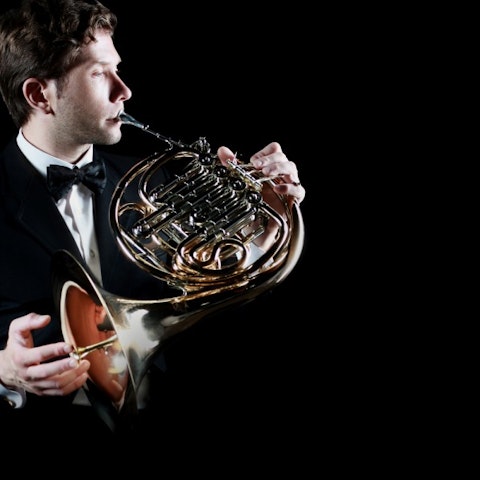
Alenavlad/Shutterstock.com


